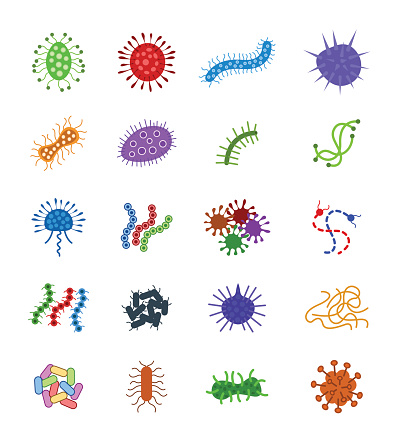Microorganisms Of Clinical importance
Microorganisms are one of the two basic types of life on earth, the other being animals. Microorganisms are tiny organisms that can be microscopic. They may be found in various environments and have diverse forms and functions. Some microorganisms can be harmful, causing severe infections like food poisoning. Others play an essential role in maintaining ecological balance.
A microbe is a tiny organism that is only seen through a microscope. The study of microbes is called microbiology. There are different microbes, like bacteria, fungi, archaea, and protists. Viruses and prions are not classified as living things and are, therefore, not included in this definition. These creatures account for roughly 60% of all living things on earth.
MAJOR GROUPS OF MICROORGANISMS
Various types of bacteria, viruses, and other microscopic organisms may be found in multiple locations, including the human gastrointestinal tract and skin. The following are some examples of microorganisms:
- Bacteria are single-celled, microscopic organisms that lack a nucleus. Their cell walls contain peptidoglycan, which has a flagellum. The flagellum allows the bacterium to move. Bacteria play an essential role in human survival by breaking down nutrients in the digestive system into simpler forms. One type of bacteria, Rhizobium, is responsible for nitrogen fixation and can also be used to make antibiotics and pesticides.
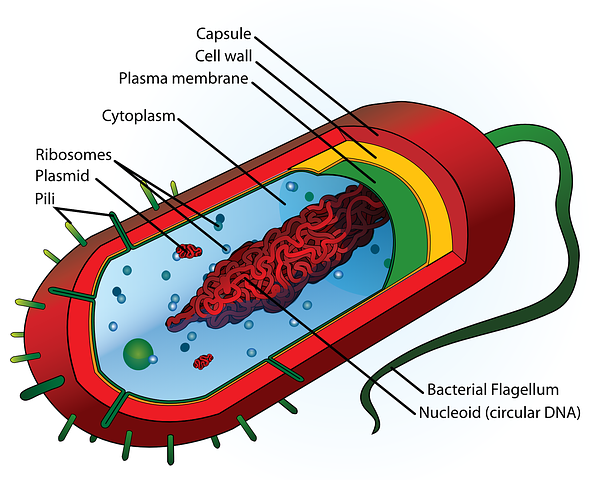
- Fungi are eukaryotic organisms that can be either unicellular or multicellular. The walls of fungi are made of chitin. They rely on others for food and cannot create their sustenance as plants do. Some primary forms of fungi are mushrooms, yeasts, and mould. Fungi serve a critical purpose in the life cycle by breaking down dead plant and animal matter to release nutrients into the soil. While some fungi can cause harm through fungal infections, others are crucial agents in medicinal antibiotics such as penicillin.
- Viruses are the bridge or link between the living and the non-living. Viruses are microscopic organisms made up of proteins, nucleic acids, and lipids; they contain the nucleotide core encased in a protein shell that can penetrate living cells. Inside host cells, viruses function by infecting these to continue replicating within themselves.
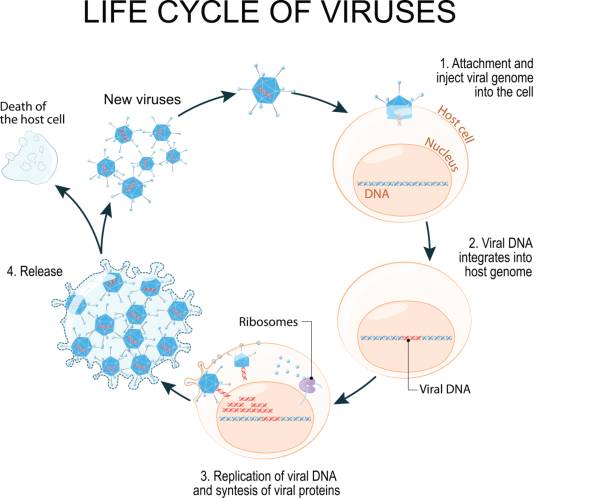
- Protists are unicellular microorganisms that, like other microorganisms, are not plants or animals. They produce their food (autotrophic) or feed off other organisms (heterotrophic). Most reproduce through binary fusion or budding. Lastly, protists play a vital role in the oxygenation of our planet and the recycling of essential nutrients.
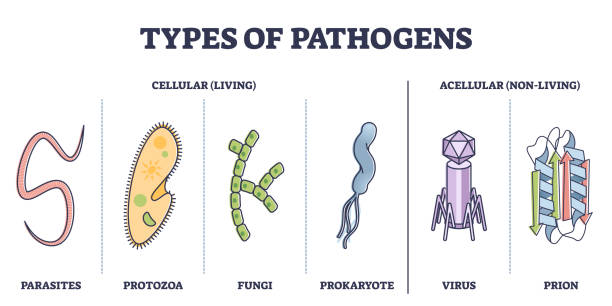
- Archaea: These single-celled microorganisms resemble bacteria in structure, but their cell wall is distinctive in that it contains unique lipids that allow them to thrive in extreme conditions. Archaea are present in the human gut and skin.
COMMON CHARACTERISTICS OF MICROORGANISMS
Many microorganisms share specific characteristics. Here are some of the features of microorganisms:
- When microorganisms are used in the large-scale production of alcohol, wine, and vinegar, it can be harmful.
- Some microorganisms are pathogens that can cause diseases in humans, plants, and animals.
- Some organisms can spoil the leather, food, and clothing.
USES OF MICROORGANISMS IN OUR DAILY LIFE
- Production of Dairy Products: Different types of bacteria assist in the fermentation process that creates various dairy products, such as yoghurt, butter, cheese and buttermilk. For example, Streptococcus is a bacterium utilized in commercial dairy production.
- Fungi contain a variety of acids. Acetic acid, citric acid, lactic acid, and gluconic acid are some of the acids produced and manufactured using fungi. Rhizopus and Penicillium are two fungi that may be used to make fruit-based wines and sugar-containing syrups.
- The fertility of soil relies heavily on microorganisms. They are essential in the composting process that turns organic material into manure. Furthermore, when these creatures are present on the earth, they help improve airflow and add nitrates and other much-needed nutrients to poor-quality soil; This results in crops having a bountiful harvest.
MICROORGANISMS OF CLINICALLY IMPORTANCE
The body is home to trillions of microbes, most of which are beneficial. These beneficial organisms comprise the microbiome and perform various tasks that keep us healthy. There are many different types of bacteria, but not all are harmful. Some bacteria are pretty helpful. The clinically essential bacteria can cause disease or illness in humans. Other types of bacteria can cause different types of infections.
Some common examples include:
- Staphylococcus aureus: This bacterium is commonly found on the skin and nose. It can cause skin infections, pneumonia, and food poisoning.
- Streptococcus pneumoniae: This bacterium causes pneumonia, meningitis, and ear infections.Escherichia coli: This bacterium is found in the gut. It can cause diarrhea, urinary tract infections, and respiratory illness.
- Mycobacterium tuberculosis: This bacterium causes tuberculosis, a severe lung infection. Some bacteria are opportunistic pathogens, which usually do not cause disease, but they can if the opportunity arises (for example, if a person’s immune system is compromised).
OPPORTUNISTIC INFECTIONS
- Pseudomonas aeruginosa: This bacterium is found in soil and water. It can cause infections in people with burns or other wounds.
- Candida albicans: This yeast is typically found in the gut. It can cause thrush (a mouth infection) and vaginal thrush.
- Aspergillus: This fungus is found in soil, dust, and bird droppings. It can cause a severe lung infection called aspergillosis.
CLASSIFICATION OF BACTERIA
Bacteria are single-celled microorganisms that can cause disease. Four main groups of bacteria are of clinical importance:
The Gram stain is the most important and widely used method for differentiating types of bacteria. There are four main groups of bacteria, based on their Gram staining reaction:
- Gram-positive bacteria: These bacteria retain the crystal violet dye used in the Gram stain procedure. They are further subdivided into cocci (spherical shaped) and bacilli (rod-shaped). Common examples of gram-positive bacteria include Streptococcus pneumoniae, Staphylococcus aureus, and Listeria monocytogenes.
- Gram-negative bacteria: These bacteria do not retain the crystal violet dye and instead take on a pink or red hue. They are further subdivided into cocci (spherical shaped) and bacilli (rod-shaped). Common examples of gram-negative bacteria include Escherichia coli, Pseudomonas aeruginosa, and Klebsiella pneumoniae.
- Many other types of bacteria do not fall into either of these two main categories. These include the Gram-positive bacteria Mycobacterium tuberculosis and Mycobacterium leprae, as well as the Gram-negative bacterium Neisseria gonorrhoeae.
- Several fungi can cause infections in humans, such as Candida albicans and Aspergillus fumigatus.
- Finally, several viruses can cause diseases, such as the human immunodeficiency virus (HIV) and the influenza virus.
Viruses are tiny infectious particles that can only reproduce inside the cells of other living organisms. Four main groups of viruses are of clinical importance:
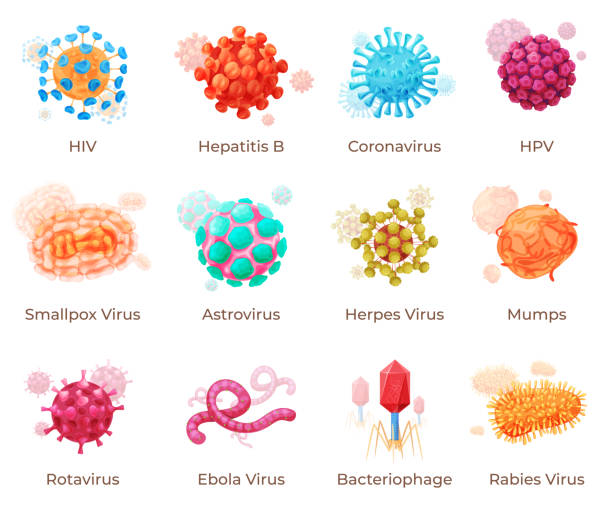
- Herpesviruses: These viruses cause infections such as chickenpox, shingles, and genital herpes.
- Influenza viruses cause infections such as the common cold and influenza (flu).
- Retroviruses include the human immunodeficiency virus (HIV), which causes AIDS. Viruses that cause gastroenteritis include rotaviruses and noroviruses, which cause vomiting and diarrhea.
- Rotaviruses: These viruses cause severe diarrhea in young children.
It is important to remember that not all microorganisms are harmful. Many are beneficial. For example, the bacteria in our gut help us digest our food and provide us with essential nutrients. Similarly, the fungi that live on our skin help to protect us from infection.
WAYS IN WHICH BACTERIA CAN CAUSE DISEASES.
There are several different ways in which microorganisms can cause disease. They can generate an infection, produce toxins, or trigger an immune response. Infections occur when microorganisms invade our bodies and multiply; this can happen through;
- cuts or grazes in the skin,
- through contact with contaminated food or water,
- Alternatively, by inhaling airborne particles.
Toxins are poisonous substances that are produced by some microorganisms. These toxins can cause food poisoning or severe infections such as sepsis. The immune system is our body’s defence against infection. In some cases, however, the immune system can overreact to the presence of microorganisms, leading to conditions such as allergies or autoimmune diseases.
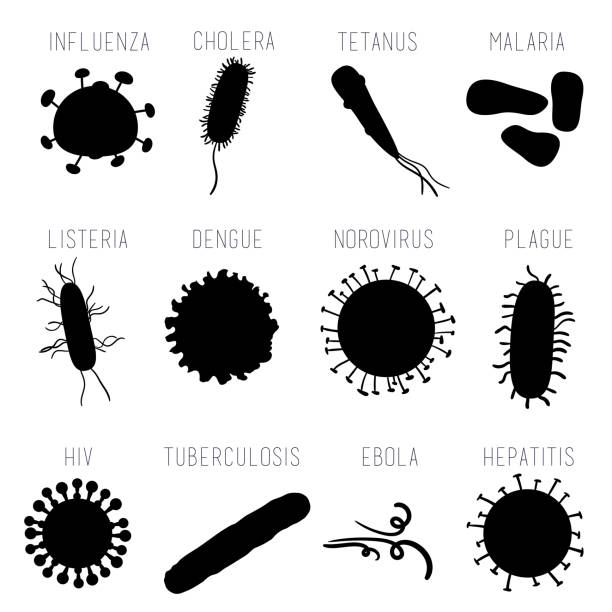
COMMON BACTERIAL INFECTIONS
- Group A streptococci are a common cause of throat and skin infections. These microorganisms can also cause more severe diseases such as scarlet fever, rheumatic fever and post-streptococcal glomerulonephritis.
- Group B streptococci are usually found in healthy adults’ gut and vaginal flora. However, they can cause infections in newborn babies and pregnant women.
- Staphylococcus aureus is a common cause of skin and soft tissue infections. It can also cause more severe diseases such as pneumonia, meningitis and sepsis.
- Enterococci are normal inhabitants of the gut flora. However, they can cause infections in hospital patients, particularly those immunocompromised or with underlying medical conditions.
- Pseudomonas aeruginosa is a common cause of infections in hospital patients, particularly those immunocompromised or with underlying medical conditions. It can also cause infections in healthy people, especially if they have open wounds.
- Acinetobacter baumannii is a common cause of infections in hospital patients, particularly those immunocompromised or with underlying medical conditions. It can also cause infections in healthy people, especially if they have open wounds.
- Mycobacterium tuberculosis is the causative agent of tuberculosis. It is a severe disease that can affect any body part but is most commonly found in the lungs.
- Staphylococcus aureus is a type of bacteria that is commonly found on the skin and in the nose. While it is usually harmless, it can cause severe infections if it gets into the body through an open wound.
- Enterococcus faecalis is a type of bacterium that is often found in the intestine. While it is generally not harmful, it can cause severe infections if it enters the bloodstream.
- Clostridium difficile is a type of bacterium that can cause severe diarrhea. It is often found in hospitals and long-term care facilities.
- Pseudomonas aeruginosa is a type of bacteria that can cause serious infections, particularly in people with weakened immune systems. It is often found in hospitals and long-term care facilities.
- Acinetobacter baumannii is a type of bacteria that can cause serious infections, particularly in people with weakened immune systems. It is often found in hospitals and long-term care facilities.
- Enterobacteriaceae are a group of bacteria that includes many species that can cause serious illnesses, such as pneumonia and blood poisoning. They are often found in hospitals and long-term care facilities.
- Klebsiella pneumoniae is a bacterium that can cause severe respiratory infections, particularly in people with weakened immune systems. It is often found in hospitals and long-term care facilities.
For other articles just like this one, click here to be redirec.ted
Do you need a similar assignment done for you from scratch? We have qualified writers to help you. We assure you an A+ quality paper that is free from plagiarism. Order now for an Amazing Discount!
Use Discount Code “Newclient” for a 15% Discount!
NB: We do not resell papers. Upon ordering, we do an original paper exclusively for you.



